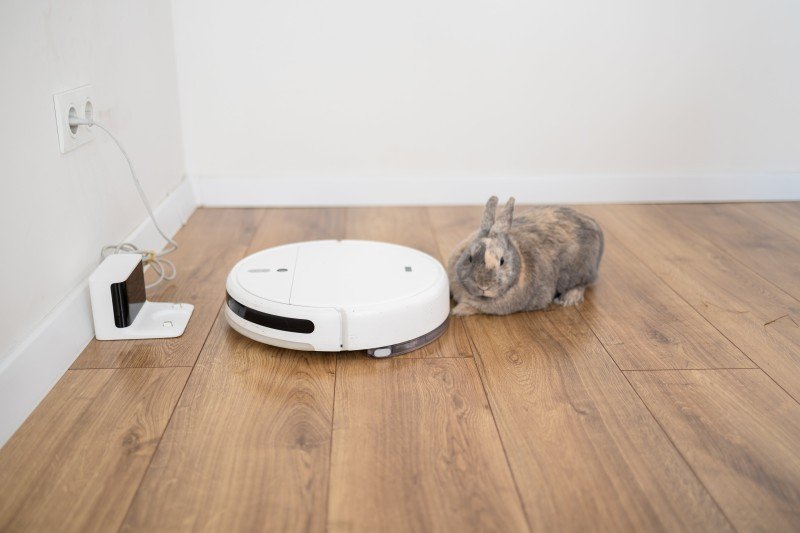The Rise of Autonomous Vacuums: Revolutionizing Home Cleaning
In the age of innovation, family tasks are becoming progressively automated, and among the most notable advancements in this world is the autonomous vacuum. These smart cleaning robots are created to reduce the drudgery of traditional vacuuming, making them popular among time-strapped homes. This short article checks out the advancement, functionality, benefits, and constraints of autonomous vacuums, along with a comparison of a few of the leading designs on the marketplace today.
What is an Autonomous Vacuum?
An autonomous vacuum, also referred to as a robotic vacuum cleaner, is a little, automated device that navigates through your home to tidy floorings without human intervention. Geared up with sensors, electronic cameras, and advanced software, these vacuums can find barriers, prevent stairs, and enhance cleaning courses. They usually operate from a rechargeable battery, going back to their charging stations when their power is low or when cleaning jobs are completed.
Secret Features of Autonomous Vacuums
Smart Navigation:
- Utilizes sensors and algorithms to map the environment.
- Can navigate complex designs and prevent challenges.
Scheduling:
- Allows users to set cleaning times.
- Can run when the home is empty, ensuring very little disruption.
Connection:
- Many designs connect to Wi-Fi, permitting for app control and integration with smart home systems.
- Users can tailor settings, check cleaning status, and receive notifications through mobile applications.
Suction Power:
- Varies between models; some deal adjustable suction settings for different floor types.
- High-end designs feature effective suction capable of getting pet hair and deep dirt.
Floor Type Adaptability:
- Capable of cleaning carpets, hardwood, tiles, and more.
- Certain designs concentrate on customized cleaning for numerous surface areas.
The Advantages of Using Autonomous Vacuums
1. Time-Saving
Among the most considerable advantages of autonomous vacuums is the quantity of time they save. Rather than spending hours pushing a traditional vacuum, property owners can set robotic vacuums to tidy while they are engaged in other activities.
2. Consistent Cleaning Schedule
With the capability to schedule cleansings, these vacuums guarantee that areas are regularly cleaned up, resulting in a cleaner home in general. Regular cleaning assists preserve indoor air quality, especially for families with allergies or asthma.
3. Smart Home Integration
Many autonomous vacuums can be integrated with smart home systems for smooth operation. House owners can control their vacuums through voice commands through devices like Amazon Alexa or Google Assistant, improving user benefit.
4. Compact Design
The slim profile of these gadgets allows them to clean up under furnishings, such as couches and beds, where standard vacuums typically can not reach.
5. Pet-Friendly
For pet owners, autonomous vacuums can be a game-changer, as they are often geared up with specialized features for getting pet hair and dander, adding to a cleaner home environment.
Limitations of Autonomous Vacuums
In spite of their numerous advantages, autonomous vacuums also have constraints:
1. Restricted Deep Cleaning
While these vacuums effectively maintain cleanliness, they may not change the effectiveness of a deep tidy provided by conventional vacuums, especially for greatly stained locations.
2. Capability Constraints
A lot of autonomous vacuums come with small dust bins that require to be emptied regularly, particularly in bigger homes or homes with family pets. This can be an inconvenience for some users.
3. Navigation Challenges
Although navigation innovation is continually enhancing, some models may fight with particular designs, especially complex spaces with numerous challenges or extremely small rooms.
4. Rate Point
While prices have actually become more available, high-end models can still be quite costly, presenting a barrier for some consumers.
Comparison of Top Autonomous Vacuum Models
| Model | Smart Features | Battery Life | Suction Strength | Rate Range |
|---|---|---|---|---|
| iRobot Roomba 980 | App Control, Voice Assistant | 120 minutes | 1700 Pa | ₤ 700 - ₤ 900 |
| Roborock S6 MaxV | Advanced Mapping, Connectable | 180 minutes | 2500 Pa | ₤ 600 - ₤ 800 |
| Ecovacs Deebot Ozmo | Mopping, Smart Home | 110 minutes | 1500 Pa | ₤ 450 - ₤ 700 |
| Neato Botvac D7 | Laser Navigation, Custom Zones | 120 minutes | 2000 Pa | ₤ 800 - ₤ 900 |
| Shark IQ Robot | Self-Emptying Base, Smart Map | 90 minutes | 1500 Pa | ₤ 400 - ₤ 600 |
Notable Takeaways
- Smart Features: Consumers ought to prioritize models offering robust clever features for benefit and performance.
- Battery Life: A longer battery life is beneficial for bigger home.
- Suction Strength: Depending on family needs, differing suction power can significantly affect cleaning effectiveness.
FAQs about Autonomous Vacuums
Q1: How do I maintain my autonomous vacuum?
A: Regular upkeep consists of cleaning the brushes, clearing the dustbin, and checking for blockages. Additionally, keeping the sensors clean up will help preserve navigation accuracy.
Q2: Can robotic vacuums tidy carpets and carpets?
A: Yes, many robotic vacuums are designed to efficiently clean both difficult surfaces and carpets. Nevertheless, suction power might differ based on the model.
Q3: Do robotic vacuums require Wi-Fi?
A: While many autonomous vacuums gain from Wi-Fi connection for app control and updates, some models can operate individually without a cordless connection.
Q4: How frequently should I run my robotic vacuum?
A: It depends on your living situation, but running it several times a week is often advised, particularly for homes with animals.
In conclusion, autonomous vacuums represent a considerable advancement in home cleaning technology, promising convenience and efficiency. While click through the following web site may not entirely change standard vacuum, they are undoubtedly valuable in maintaining a clean living environment. As technology continues to progress, the future of home cleaning looks appealing, and these devices are at the leading edge of the transformation.

